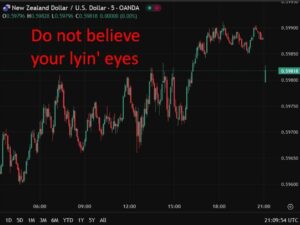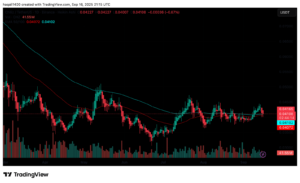Forex Economic Calendar Overview: Key Events for the Next Trading Week (01.09.2025–07.09.2025)

Markets are still reacting to Fed Chair Jerome Powell’s speech at the Jackson Hole Economic Policy Symposium, where his dovish comments on the monetary policy outlook set the tone for trading. Volatility remains elevated amid US trade tensions and broader geopolitical risks.
In the upcoming week of September 1–7, 2025, market participants will focus on the publication of crucial macroeconomic statistics from China, the Eurozone, the US, Australia, Switzerland, the UK, and Canada.
Besides, investors will pay close attention to the publication of the August US labor market data on Friday.
Note: During the coming week, new events may be added to the calendar, and/or some scheduled events may be canceled. GMT time
The article covers the following subjects:
Major Takeaways
- Monday: Caixin China General Manufacturing PMI.
- Tuesday: Eurozone Harmonized Index of Consumer Prices (HICP), US ISM manufacturing PMIs.
- Wednesday: Australian GDP, Caixin China General Services PMI.
- Thursday: Australian trade balance, Swiss CPIs, Eurozone retail sales, US ADP report, and US ISM services PMI.
- Friday: UK retail sales, Eurozone GDP, Canadian labor market data, and US labor market data for August.
- Key event of the week: US labor market data for August.
Monday, September 1
The US is celebrating Labor Day. The country’s banks will be closed due to the holiday, and trading volumes are expected to be lower than usual during the US trading session.
01:45 – CNY: Caixin China General Manufacturing PMI
The Caixin Purchasing Managers’ Index (PMI) is a leading indicator of China’s manufacturing sector. As the world’s second-largest economy, China’s release of significant macroeconomic data may strongly influence the financial market.
Previous values: 49.5, 50.4, 48.3, 51.2, 50.8, 50.1 in January 2025, 50.5 in December 2024, 51.5, 50.3, 49.3, 50.4, 49.8, 51.8, 51.7, 51.4, 51.1, 50.9, 50.8, 50.8, 50.8, 50.7, 49.5, 50.6, 51.0, 49.2, 50.5, 50.9, 49.5, 50.0, 51.6, 49.2 in January 2023.
A decline in the indicator value and reading below 50 may negatively affect the renminbi, as well as commodity currencies such as the New Zealand and Australian dollar. Data that exceeds forecasted or previous values will have a positive impact on these currencies.
Tuesday, September 2
09:00 – EUR: Harmonized Index of Consumer Prices. Core HISP (Flash)
The Harmonised Index of Consumer Prices (HICP) is published by Eurostat and measures the change in prices of a selected basket of goods and services over a specific period. The index is a key indicator for assessing inflation and changes in consumer preferences. A positive reading strengthens the euro, while a negative reading weakens it.
Previous values (YoY): +2.0%, +2.0%, +1.9%, +2.2%, +2.2%, +2.3%, +2.5% in January 2025, +2.4% in December 2024, +2.3%, +2.0%, +1.7%, +2.2%, +2.6%, +2.5%, +2.6%, +2.4%, +2.4%, +2.6%, +2.8% in January 2024, +2.9%, +2.4%, +2.9%, +4.3%, +5.2%, +5.3%, +5.5%, +6.1%, +6.1%, +7.0%, +6.9%, +8.5%, +8.6% in January 2023, +9.2%, +10.1%, +10.6%, +9.9%, +9.1%, +8.9%, +8.6%, +8.1%, +7.4%, +7.4%, +5.9%, +5.1% in January 2022.
If the data is worse than the forecasted value, the euro may face a short-term but sharp decline. Conversely, if the data surpasses the forecast and/or the previous value, it could strengthen the euro in the short term. The ECB’s consumer inflation target is just below 2.0%, and the reading suggests that inflation continues to decline in the Eurozone.
According to the accompanying statement following the ECB’s October meeting, when its leaders decided to cut the benchmark interest rate by 25 basis points, the regulator stated that the disinflation process is underway.
And now, the ECB administration is signaling its intention to continue easing its monetary policy, which is a negative factor for the euro.
The Core Harmonized Index of Consumer Prices (Core HICP) measures the price change of a selected basket of goods and services over a specified period and serves as a key indicator for assessing inflation and consumer preferences. Food and energy are excluded from this indicator in order to provide a more accurate assessment. A high result strengthens the euro, while a low one weakens it.
Previous values YOY: +2.3%, +2.3%, +2.3%, +2.7%, +2.4%, +2.6%, +2.7% in January 2025, 2.7% in December 2024, +2.7%, +2.7%, +2.7%, +2.8%, +2.9%, +2.9%, +2.9%, +2.7%, +2.9%, +3.1%, +3.3% in January 2024, +3.4%, +3.6% +4.2%, +4.5%, +5.3%, +5.5%, +5.5%, +5.3%, +5.3%, +5.6%, +5.7%, +5.6%, +5.3%, +5.2%, +5.0%, +5.0%, +4.8%, +4.3%, +4.0%, +3.7%, +3.8%, +3.5%, +3.0%, +2.7%, +2.3% in January 2022.
If the August 2025 figures are weaker than the previous or forecasted value, the euro may be negatively affected. If the data turns out to be better than the forecasted or previous value, the currency will likely grow.
According to recently reported data, the eurozone’s core inflation rate is still high, above the ECB’s target of 2.0%. As a result, the ECB is inclined to maintain high interest rates, which is favorable for the euro in normal economic conditions.
14:00 – USD: US ISM Manufacturing Purchasing Managers’ Index
The US PMI, published by the Institute for Supply Management (ISM), is an important measure of the US economy. When the index surpasses 50, it bolsters the US dollar, whereas readings below 50 have a detrimental effect on the greenback.
Previous values: 48.0, 49.0, 48,5, 48.7, 49.0, 50.3, 50.9 in January 2025, 49.3 in December 2024, 48.4, 46.5, 47.2, 47.2, 46.8, 48.5, 48.7, 49.2, 50.3, 47.8, 49.1 in January 2024, 47.4 in December, 46.7 in November, 46.7 in October, 49.0 in September, 47.6 in August, 46.4 in July, 46.0 in June, 46.9 in May, 47.1 in April, 46.3 in March, 47.7 in February, 47.4 in January 2023.
The index has been below the 50 level for several months now, indicating a slowdown in this sector of the US economy. The growth of index values supports the US dollar. Conversely, if the index reading falls below the forecasted values or below 50, the greenback may sharply depreciate in the short term.
Wednesday, September 3
01:30 – AUD: Australian GDP for Q2
GDP is a key indicator of the Australian economy’s health. A strong report will bolster the Australian dollar, while a weak GDP report will drag the currency down.
Previous values: +0.2% (+1.3% YoY), +0.6% (+1.3% YoY) in Q4 2024, +0.3% (+0.8% YoY) in Q3, +0.2% (+1.0% YoY) in Q2, +0.1% (+1.1% YoY) in Q1 2024, +0.2% (+1.5% YoY) in Q4 2023, +0.2% (+2.1% YoY) in Q3, +0.4% (+2.1% YoY) in Q2, +0.2% (+2.3% YoY) in Q1 2023, +0.5% (+2,7% YoY) in Q4, +0.6% (+5.9% YoY) in Q3, +0.9% (+3.6% YoY) in Q2, +0.8% (+3.3% YoY) in Q1, +3.4% (+4.2% YoY) in Q4, -1.9% in Q3, +0.7% in Q2, +1.8% in Q1 2021. A higher reading is positive for the Australian dollar, while a lower reading is negative. If the data falls short of the forecast, the currency may decline.
01:45 – CNY: Caixin China General Services PMI
The Caixin Purchasing Managers’ Index (PMI) is a leading indicator of China’s services sector. Since China’s economy is the second largest in the world, the release of its significant macroeconomic indicators can profoundly influence the overall financial market.
Previous values: 52.6, 50.6, 51.1, 50.7, 51.9, 51.4, 51.0 in January 2025, 52.2 in December 2024, 51,5, 52.0, 50.3, 51.6, 52.1, 51.2, 54.0, 52.5, 52.7, 52.5, 52.7 in January 2024, 52.9, 51.5, 50.4, 50.2, 51.8, 54.1, 53.9, 57.1, 56.4, 57.8, 55.0, 52.9 in January 2023.
Although an index value above 50 indicates growth, a relative decline in the indicator may adversely affect the yuan. Since China is the most important trade and economic partner of Australia and New Zealand, a deterioration in Chinese macro data may negatively impact the Australian and New Zealand dollars. Conversely, an increase in Chinese macro figures is usually positive for these currencies.
06:00 – AUD: Reserve Bank of Australia Governor Michele Bullock’s Speech
Michele Bullock will assess the current state of Australia’s economy and outline her department’s monetary policy. Market participants anticipate her insights on the central bank’s policies amid global recessionary trends and elevated inflation levels in Australia.
Any signals regarding her plans to adjust the RBA’s monetary policy parameters will cause a sharp surge in the Australian currency and stock market volatility. If the Australian Central Bank Governor avoids discussing monetary policy, the market response will be muted.
Thursday, September 4
01:30 – AUD: Australian Balance of Trade
Balance of Trade is an indicator that measures the ratio between exports and imports. An increase in Australian exports leads to a larger trade surplus, positively affecting the Australian dollar. Previous values (in billion Australian dollars): 5,365 in June, 2,238 in May, 5,413 in April, 6.900 in March, 2,852 in February, 5.156 in January 2025, 4.924 in December, 6.792 in November, 5.670 in October, 4,5362 in September, 5.248 in August, 5.636 in July, 5.425 in June, 5.052 in May, 6.678 in April, 4.841 in March, 6.707 in February, and 9.873 in January 2024.
A decrease in the trade surplus could negatively affect the Australian dollar, while an increase in the indicator figure may bolster the currency.
06:30 – CHF: Switzerland Consumer Price Index
The Consumer Price Index (CPI) reflects the retail price trends for a group of goods and services comprising the consumer basket. The CPI is a key gauge of inflation. Additionally, the index has a significant impact on the value of the Swiss franc.
In July 2025, consumer inflation gained 0% (+0.2% YoY) after +0.2% (+0.1% YoY), +0.1% (-0.1% YoY) in May, 0% in April, +0.6% (+0.3% YoY) in February, -0.1% (+0.4% YoY) in January 2025, -0.1% (+0.6% YoY) in December, -0.1% (+0.7% YoY) in November, -0.1% (+0.6% YoY) in October, -0.3% (+0.8% YoY) in September, 0% (+1.1% YoY) in August, -0.2% (+1.3% YoY) in July, 0% (+1.3% YoY) in June, +0.3% (+1.4% YoY) in May, +0.3% (+1.4% YoY) in April, 0% (+1.2% YoY) in February, +0.2% (+1.3% YoY) January 2024, +1.7% in December 2023, +1.4% in November, and +1.7% YoY in October.
An index reading below the forecasted or previous value may weaken the Swiss franc, as low inflation will force the Swiss Central Bank to ease its monetary policy. Conversely, a high reading would be positive for the Swiss franc.
09:00 – EUR: Eurozone Retail Sales
Retail sales data is the main measure of consumer spending, indicating the change in sales volume. A high indicator result strengthens the euro, while a low one weakens it.
Previous values: +0.3% (+3.1% YoY), -0.7% (+1.8% YoY), +0.1% (+2.3% YoY), -0.1% (+1.5% YoY), +0.3% (+2.3 YoY), -0.3% (+1.5% YoY), -0.2% (+1.9% YoY) in January 2025, +0.1% (+1.2% YoY) in December 2024, -0.5% (+1.9% YoY), +0.5% (+2.9% YoY), +0.2% (+0.8% YoY), +0.1% (-0.1% YoY), -0.3% (-0.3% YoY), +0.1% (+0.3% YoY), -0.5% (0% YoY), +0.8% (+0.7% YoY), -0.5% (-0.7% YoY), +0.1% (-1.0% YoY) in January 2024, -1.1% (-0.8% YoY) in December, -0.3% (-1.1% YoY) in November, +0.1% (-1.2% YoY) in October, -0.3% (-2.9% YoY) in Sept, 1.2% (-2.1% YoY) in August, -0.2% (-1.0% YoY) in July, -0.3% (-1.4% YoY) in June, 0% (-2.4% YoY) in May, -1.2% (-2.9% YoY) in April, -0.8% (-3.3% YoY) in March, +0.3% (-2.4% YoY) in February, -2.7% (-1.8% YoY) in January, +0.8% (-2.8% YoY) in December 2022.
The data suggests that retail sales have not returned to pre-pandemic levels after a severe drop in March–April 2020, when Europe was under strict quarantine measures, and are periodically declining again. Nevertheless, values exceeding the forecast will strengthen the euro.
12:15 – USD: ADP Private Sector Employment Report
The ADP report on private sector employment significantly impacts the market and the US dollar. An increase in this indicator value positively affects the greenback. The number of workers in the US private sector is expected to increase again in February after rising by 104k in July, declining by 37k in June, and gaining 29k in May, 60k in April, 147k in March, 84k in February, 186k in January 2025, 176k in December 2024,146k in November, 184k in October, 159k in September, 103k in August, 111k in July, 155k in June, 157k in May, 188k in April, 208k in March, 155k in February, 111k in January 2024, 158k in December, 104k in November, 111k in October, 137k in September, 135k in August, 307k in July, 543k in June, 206k in May, 293k in April, 103k in March, 275k in February, 131k in January 2023.
The growth of the index values may positively affect the US dollar, while low index readings may adversely influence it. A negative market reaction and a potential decline in the dollar may occur if the data turns out to be worse than forecasted.
The ADP report is not directly correlated with the official data of the US Department of Labor, which is due on Friday. However, the ADP report often serves as a forerunner of the department’s data and significantly influences the market.
14:00 – USD: US ISM Services Purchasing Managers’ Index
The PMI assesses the state of the US services sector, accounting for about 80% of US GDP. The share of final goods production is about 20% of GDP, including 1% for agriculture and 18% for industrial production. Therefore, the publication of the services sector data significantly impacts the US dollar. An indicator reading above 50 is positive for the currency.
Previous values: 50.1 in July, 50.8 in June, 49.9 in May, 51.6 in April, 50.8 in March, 53.5 in February, 52.8 in January 2025, 54.1 in December 2024, 52.1 in November, 56.0 in October, 54.9 in September, 51.5 in August, 51.4 in July, 48.8 in June, 53.8 in May, 49.4 in April, 51.4 in March, 52.6 in February, 53.4 in January 2024, 50.5 in December, 52.5 in November, 51.9 in October, 53.4 in September, 54.5 in August, 52.7 in July, 53.9 in June, 50.3 in May, 51, 9 in April, 51.2 in March, 55.1 in February, 55.2 in January 2023, 49.6 in December, 56.5 in November, 54.4 in October, 56.9 in August, 56.7 in July, 55.3 in June, 55.9 in May, 57.1 in April, 58.3 in March, 56.5 in February, 59.9 in January 2022.
The growth of index values will favorably affect the US dollar. However, a relative decline in the index values and readings below 50 may negatively affect the US dollar in the short term.
Friday, September 5
06:00 – GBP: UK Retail Sales
The retail sales economic indicator is a key metric that tracks the level of consumer demand and significantly impacts market performance and the national currency. Additionally, it serves as an indirect indicator of inflation, making it a key concern for a country’s central bank and market participants.
The retail sales report is released by the UK Office for National Statistics. The Retail Sales change is considered to indicate the consumer spending level. High indicator values are positive for the British pound, while low readings are negative.
Previous index values YoY: +1.7%, -1.3%, +5.0%, +2.6%, +2.2%, +1.0% in January 2025, +3.6% in December 2024, 0%, +2.0%, +3.2%, +2.3%, +1.5%, -0.3%, +1.7%, -2.3%, +0.4%, -0.3%, -0.3%, +0.4% in January 2024, -2.8% in December 2023, +0.0%, -2.3%, -1.1%, -1.2%, -3.1%, -1.8 in June 2023.
09:00 – EUR: Eurozone GDP for Q2 (Final Estimate)
GDP is considered to be an indicator of the overall economic health. A rising trend of the GDP indicator is positive for the euro, while a low reading weakens the currency.
Recent Eurozone macroeconomic data have shown a gradual recovery in the growth rate of the European economy after a sharp decline in early 2020.
Previous values: +0.6% (+1.5% YoY) in Q1 2025, +0.2% (+1.2% YoY) in Q4 2024, +0.4% (+0.9% YoY) in Q3, +0.2% (+0.6% YoY) in Q2, +0.3% (+0.4% YoY) in Q1 2024, 0% (+0.1% YoY) in Q4 2023, -0.1% (0% YoY) in Q3, +0.1% (+0.5% YoY) in Q2, -0.1% (+1.0% YoY) in Q1 2023, 0% (+1.9% YoY) in Q4 2022, +0.7% (+4,0% YoY) in Q3, +0.8% (+4.1% YoY) in Q4 2022, +0.7% (+4,6% YoY) in Q3, +2.2% (+3.9% YoY) in Q3, +2.2% (+14.3% YoY) in Q2, and -0.3% (-1.3% YoY) in Q1 2021.
If the data is below the forecasted and/or previous values, the euro may decline. Conversely, readings exceeding the predicted values may strengthen the euro in the short term. However, the European economy is still far from fully recovering even to pre-crisis levels.
The preliminary estimate stood at +0.1% (+1.4% YoY).
12:30 – CAD: Canadian Unemployment Rate
Statistics Canada will release the country’s November labor market data. Massive business closures due to the coronavirus and layoffs have also contributed to the unemployment rate, increasing from the usual 5.6–5.7% to 7.8% in March and 13.7% in May 2020.
In July 2025, unemployment stood at 6.9% against 6.9% in June, 7.0% in May, 6.9% in April, 6.6% in February and January 2025, 6.7% in December 2024, 6.8% in November, 6.5% in October and September, 6.6% in August, 6.4% in July and June, 6.2% in May, 6.1% in April and March, 5.8% in February, 5.7% in January 2024, 5.8% in December and November 2023, 5.7% in October, 5.5% in September, August, and July, 5.4% in June, 5.2% in May, 5.0% in April, March, February, January, December, 5.1% in November, 5.2% in October and September, 5.4% in August, 4.9% in July and June, 5.1% in May, 5.2% in April, 5.3% in March, 5.5% in February, 6.5% in January 2022.
If the unemployment rate continues to rise, the Canadian dollar will depreciate. If the data exceeds the previous value, the Canadian dollar will strengthen. A decrease in the unemployment rate is a positive factor for the Canadian dollar, while an increase is a negative factor.
12:30 – USD: Average Hourly Earnings. Private Nonfarm Payrolls. Unemployment Rate
The most significant US labor market indicators for August.
Previous values: +0.3% in July, +0.2% in June, +0.4% in May, +0.2% in April, +0.3% in March and February, +0.5% in January 2025, +0.3% in December 2024, +0.4% in November, October, September, and August, +0.2% in July, +0.3% in June, +0.4% in May, +0.2% in April, +0.3% in March, +0.1% in February, +0.6% in January 2024, +0.4% in December and November 2023, +0.2% in October, September, and August, +0.4% in July and June, +0.3% in May, +0.5% in April, +0.3% in March, +0.2% in February, +0.3% in January 2023 / 227k in November, 36k in October, +255k in September, +78k in August, +114k in July, +118k in June, 216k in May, +108k in April, +310k in March, +236k in February, +256k in January 2024, +290k in December 2023, +182k in November, +165k in October, +246k in September, +210k in August 2023, +210k in August 2023 / 4.2% in November, 4.1% in October and September, 4.2% in August, 4.3% in July, 4.1% in June, 4.0% in May, 3.9% in April, 3.8% in March, 3.9% in February, 3.7% in January 2024, December and November 2023, 3.9% in October, 3.8% in September and August, 3.5% in July, 3.6% in June, 3.7% in May, 3.4% in April, 3.5% in March, 3.6% in February, 3.4% in January 2023.
Overall, the values are positive. Nevertheless, it is often difficult to predict the market’s reaction to the data release, given that many previous figures can be revised. This task becomes even more challenging now due to the contradictory economic situation in the US and many other large economies, with the looming risk of recession alongside persistently high inflation.
Regardless, the release of the US labor market data is anticipated to prompt increased volatility not just in the US dollar but also in the entire financial market. Most risk-averse investors will probably prefer to stay out of the market during this period.
Sunday, September 7
23:50 – JPY: Japan GDP for Q2 2025 (Final Estimate)
GDP is a measure of a country’s overall economic condition, which assesses the rate of growth or decline of a country’s economy. The Gross Domestic Product report, published by the Cabinet Office of Japan, represents the total value of all final goods and services produced by Japan over a certain period in monetary terms. A rising trend in GDP is seen as positive for the yen, while a low reading is seen as negative.
In Q1 2025 the country’s GDP stood at 0% (-0.2%), after +0.6% (+2.2% YoY) in Q4 2024, +0.3% (+1.2% YoY) in Q3, +0.7% (2.9% YoY) in Q2, -0.5% (-1.8% YoY) in Q1 2024, 0.1% (+0.4% YoY) in Q4 2023, -0.8% (-3.2% YoY) in Q3, +1.0% (+4.2% YoY) in Q2, +1.0% (+4.0% YoY) in Q1 2023.
The data suggests a bumpy recovery for the Japanese economy after it collapsed due to the coronavirus pandemic in 2020.
The forecast implies that Japan’s GDP rose in Q2 2025, which is positive for the yen. Readings that exceed expectations will undoubtedly bolster the yen and Japanese stock indices. Conversely, underperformance will exert pressure on them.
The preliminary estimate stood at +0.3% (1.0% YoY).
Price chart of USDX in real time mode
The content of this article reflects the author’s opinion and does not necessarily reflect the official position of LiteFinance broker. The material published on this page is provided for informational purposes only and should not be considered as the provision of investment advice for the purposes of Directive 2014/65/EU.
According to copyright law, this article is considered intellectual property, which includes a prohibition on copying and distributing it without consent.





